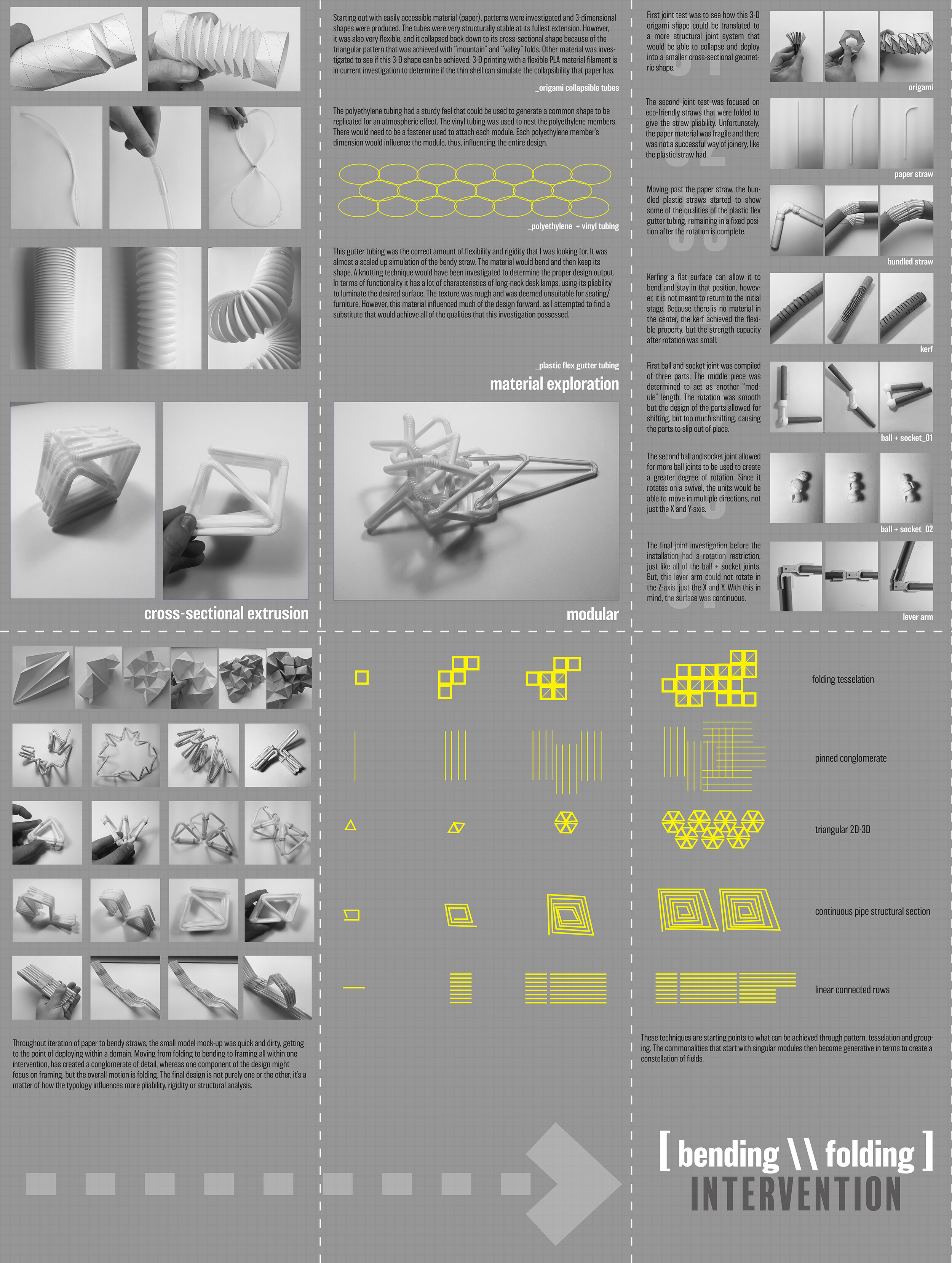Graduate Research Studio Spring 17
Kent State University | College of Architecture and Environmental Design
ARCH 60102: Graduate Design Studio II
R&D_ploy
Pretext
Temporary: mid 16th century; from Latin temporaries, from tempus, tempor- ‘time’. Adjective: lasting for only a limited period of time, not permanent.
Deploy: late 18th century: from French déployer, from Latin displicare and late Latin deplicare. ‘unfold or explain,’ from dis-, de- ‘un-’ + plicare ‘to fold.’ Verb: bring into effective action; utilize
““In reality, the only certainty is that everything changes.” – Anonymous”
“If left to itself…the [wood]chair will again become wood, and the wood will decay and return to the soil from which the tree sprang”...In this sense permanence might be thought of as the interval between successive cycles – the longer the interval, the more permanent or durable…the object.”
– Wood for the trees: a temporary theatre for the performance of 'Circles in a Forest', Janri Myburgh
Architecture has always been on the move. Preindustrial cultures offer historic examples of nomadic activities motivated by climate, animal migration, adventure, and defense. Yet while architecture carries strong traditions of transience (lightness), its practice tends to remain weighted in ideals of stability and principles of Vitruvian firmitas. Of architecture’s permanence Philam Nguyen writes, “[t]he qualities in the Vitruvian triad (strength, utility and beauty) have come to be synonymous with architecture itself and are often the criteria for judging a work’s ‘success’.” Yet can permanence serve as a guiding principal of architectural achievement when countless temporary constructions have produced some of the most noteworthy sites of public engagement and testing ground for design innovation?
Architecture holds a curious and complex relationship with permanence, which has only intensified in recent years with a shifting global economy and an increasingly mobile (ephemeral) society. As the life cycle of buildings accelerate, architects, planners, and cities need to develop inventive adaptive solutions for inactive and underutilized spaces.
This research studio investigates the prospects of temporary (interactive) architecture, specifically their typological, programmatic and material visions. It is an exploration into the temporality of space and the role structural patterns play in the configuration of variable (flexible) surfaces and enclosures.
Themes of adaptation and space making are tested, as students speculate upon the affects of surface structures. Students selected one of 3 given typologies to create an interactive architecture that produces a change of state through the transformation of components, elements and/or systems. The creative use of simple materials and systems served as a catalyst for developing a set of temporary intervention(s) that complement, exploit and/or respond to a selected context.
What are the structural, experiential and/or environmental opportunities the developed system presents? What types of envelopes, effects and/or fabrication techniques are supported through each system’s geometric morphology? What type(s) of programmatic innovations might they make available?
Individual proposals evolved from initial case study analyses drawn from 1 of 3 typologies.
1) Frames (reciprocal, articulated frame)
2) Folding (origami, kirigami, curved fold)
3) Bending | Form Active
This studio challenged students to move beyond pure design conventions, and tested new methods of structuring materials and space for adaptability. Design processes engaged computational and analog methods of ideation and making as well as full-scale prototyping.












